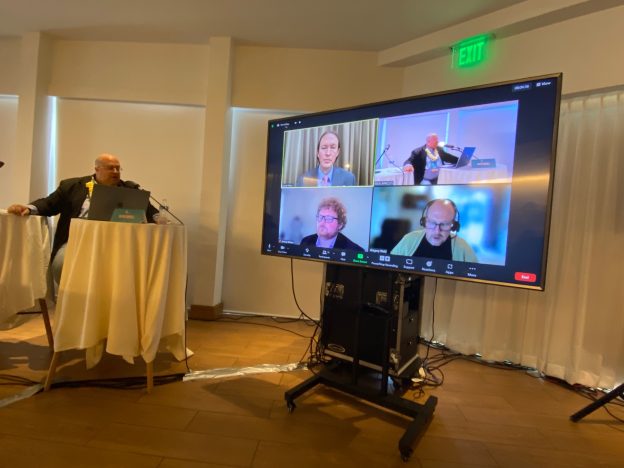不景気の中、特にハイテク業界では、非移民の解雇・レイオフをよく耳にします。私たちは、読者の皆様に、最新情報をお伝えすることにしました。
従業員の解雇は、常に難しい決断です。そして従業員が外国人労働者である場合、さらなる課題や、解雇の結果起こり得る事態についても考慮する必要があり、また州法と連邦法を順守しているかどうかも確認しなければなりません。雇用主は、行動を起こす前に、移民法に詳しい弁護士と雇用関係に詳しい弁護士の両方に相談する必要があります。
H-1B、H-1B1、E-3従業員の解雇について
・従業員への書面による通知、
・USCISへの書面による通知、および
・従業員の最終居住国への交通費として妥当な金額の支払い
が必要です。
ただし、雇用主は、従業員の扶養家族の交通費を支払う必要はありません。また、従業員が自ら退職した場合や、米国を離れないことを選択した場合には、交通費の支払いは必要ありません。労働条件申請の取り下げも(必須ではありませんが)推奨されます。雇用主は、正式に解雇するまで、従業員に対して引き続き賃金を支払う義務があります。
O-1従業員の解雇について
・USCISへの書面による通知、および
・最終居住国への交通費として妥当な金額の支払いの申し出
が必要です。
TNおよびL-1従業員の解雇について
通知や交通費の支払いの要件は特にありません。
E-1/E-2従業員の解雇について
必須ではありませんが、Eビザを発行した米国領事館に雇用が終了したことを通知することが推奨されます。とはいえ、多くの領事館や大使館では、解雇を通知するシステムがありません。例えば、東京では通常、解雇を領事館に通知しませんが、その後の申請において、解雇された従業員の名前はDS-156Eから削除されることになるでしょう。
GRACE PERIODS(滞在猶予期間)について
規則では、E-1、E-2、E-3、H-1B、H-1B1、L-1、O-1、TNステータスの労働者に、雇用終了後60日以内、または現在許可されている滞在期間の終了までのうち、いずれか短い方の猶予期間を与えています。例えば、外国人労働者が2022年1月1日に解雇され、I-94の有効期限が2022年1月15日に切れる場合、猶予期間は2022年1月15日(許可されている滞在期間の終了日)までとなります。また外国人労働者が2022年1月1日に解雇され、I-94の有効期限が2022年12月15日に切れる場合、猶予期間は2022年3月2日(2022年1月1日から60日後)までとなります。
猶予期間中、労働者は就労せずに米国に留まることができ、滞在資格の喪失とはみなされません。労働者はこの期間を利用して、出国の準備をしたり、猶予期間内に請願書を提出してくれる別の雇用主を探したり、他のステータスに変更したりすることができます。
注:この猶予期間は、H-1Bポータビリティの対象者にとっては特に有効で、H-1Bポータビリティ請願書が提出され次第、就労を開始することができるようになります。
申請中の移民請願書について
外国人労働者の雇用が終了した後、雇用主が承認済みのI-140請願書を取り下げなければならない義務はありません。外国人労働者に不利な結果をもたらす可能性があるため、取り下げを希望する場合はそのタイミングを慎重に検討してください。承認から180日経過する前に取り下げを申請すると、I-140は自動的に取り消されます。その場合、外国人労働者は、その後のI-140申請の優先日は維持されますが、通常の6年を超えるH-1Bの延長をI-140に基づいて申請することができなくなります。承認から180日経過後に撤回申請を提出して場合は、I-140の自動的な失効には至らず、労働者は、I-140に基づくH-1Bの7年目の延長を申請することができるようになります。
スポンサーとなる雇用主として、180日が経過するまでI-140を撤回しないようにすることは、離職者に提示したいメリットとなり得ます。
Considerations when terminating a foreign worker.
In a down economy, we often say termination and layoffs of nonimmigrants especially in the tech industry. We decided to give our readers some updates with regards to considerations.
Terminating an employee is always a difficult decision. Terminating a foreign worker has additional challenges and consequences that must be considered, and employers must ensure they comply with state and federal law. An employer should consult with both their immigration lawyer and employment lawyer before taking action.
Termination of H-1B, H-1B1, and E-3 employees requires:
- Written notice to the employee;
- Written notice to USCIS; and
- Payment of the cost of reasonable return transportation to the employee’s country of last residence.
The employer is not required to pay transportation for dependents. This offer is not required if the employee resigns or chooses not to leave the United States. Withdrawal of the labor condition application (while not required) is also recommended as a best practice. The employer continues to be liable for back wages until there is a bona fide termination.
Termination of O-1 employees requires:
- Written notice to USCIS; and
- Offer to pay the cost of reasonable transportation to the country of last residence.
Termination of TN and L-1 employees:
- There is no specific immigration notification requirement or return transportation requirement.
Termination of E-1/E-2 employee:
- While not mandatory, it is recommended that the U.S. consulate that issued the E visa be notified that employment was terminated. That being said, many consulates and embassies don’t have a system in place to notify them of termination, for instance, in Tokyo, we don’t usually notify the consulate of a termination but on subsequent applications, the name is of the terminated employee would be removed from the DS-156E,
GRACE PERIODS
Regulations give workers in E-1, E-2, E-3, H-1B, H-1B1, L-1, O-1, and TN status a grace period of up to 60 days after the employment is terminated or until the end of the currently authorized stay, whichever is shorter. In other words, if the foreign worker is terminated on 1/1/22 and their I-94 expires on 1/15/22, then their grace period expires 1/15/22 (end of the currently authorized stay). If the foreign worker is terminated on 1/1/22 and their I-94 expires on 12/15/22, then their grace period expires 3/2/22 (60 days from 1/1/22).
If terminated with grace period availability, the worker may remain in the United States without working and will not be considered out of status. The worker can use this time to prepare to depart, find another employer that will file a petition within the grace period, or change to another status.
Note: The grace period is especially helpful for individuals who are eligible for H-1B portability, which allows the worker to begin working as soon as an H-1B portability petition is filed.
FOR PENDING IMMIGRANT PETITIONS
There is no requirement that an employer withdraw an approved I-140 petition after a foreign worker’s employment is terminated. If withdrawal is desired, consider the timing of that request carefully, as it may have adverse consequences for the foreign worker. A withdrawal request made before 180 days have passed from approval will automatically revoke the petition. The worker will keep the priority date for future I-140 petitions but will be unable to rely on the I-140 approval to qualify for H-1B extensions beyond the standard six-year limit. Submission of a withdrawal request after 180 days have passed from approval will not result in automatic revocation of the I-140, and the terminated worker will be entitled to I-140 approval benefits, including continued eligibility for H-1B extensions beyond the six-year limit.
As a sponsoring employer, allowing an I-140 to reach the 180-day mark before withdrawal could be a benefit you want (or do not want) to offer the departing employee.




